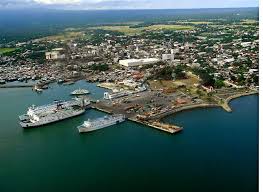Panguil bay, as the name implies it is a canine tooth shaped bay which is located in the northwestern part of Mindanao. It is the mark of separation of the Zamboanga peninsula from the mainland Mindanao. Little is known about the bay, but because of this, it is also safe to say that the bay is less likely inhabited and wasted.
Panguil bay is a part of a much bigger body of water which is the Iligan bay. It is one of the most richest fishing grounds in the country that gives different product that ranges from shrimps ,prawns to crabs and sea shells but unfortunately over fishing has got the numbers of sea life to decrease dramatically and over fishing is only one reason. Mangroves that plays a huge role in the ecosystem of Panguil bay are being threatened, although in the previous years they have not seen any importance for this mangroves, now, after a series of research and studies they found out that these mangroves of multiple specie, has a big role in the local species’ composition and density. Because of this decline they are now starting to implement mangrove rehabilitation in major parts specially in the municipality of Kolambugan which has the highest mangrove density.
Another specie existing in Panguil bay is the number of plankton specie. These are just recently discovered and studied, with a total of 93 phytoplankton specie in the area that comes from 4 major groups namely diatoms, dinoflagellates, silicoflagellates and cyanobacteria.
It is suspected that the primary reasons for this rise of plankton population are water quality in the said area, temperature, salinity and chemical solids. Now, local government is in an alarming position to prevent eutrophication that may cause major impacts and changes in the phytoplankton dynamics
References:
1. agris.fao.org (Food and Agriculture Organization of the United Nations)
2. Phytoplankton diversity and abundance in Pangui lBay, Northwestern Mindanao, Philippines in relation to some physical and chemical characteristics of the water (Maria Lourdes D. G. Lacuna, Mary Rose R. Esperanza, Mark Anthony J.Torres, Maria Luisa S. Orbita, Department of Biological Sciences, College of Science and Mathematics, Mindanao State University-Iligan Institute of Technology, Iligan City, Philippines.)
